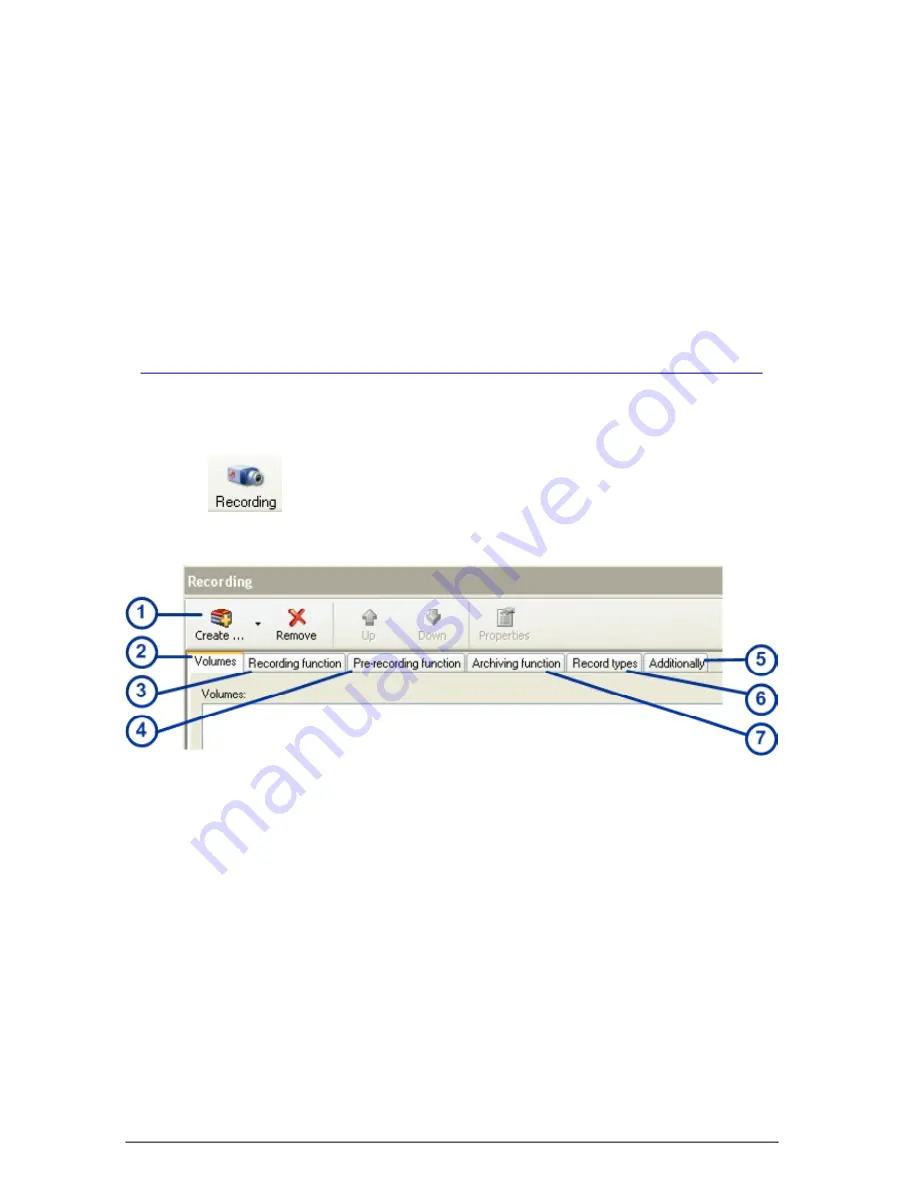
136
SKYROS Corporation VideoNet 8.4 User guide
Recording
panel consists of seven parts:
toolbar (1)
,
Volumes
tab
(2)
,
Recording
function tab (3), Pre-recording function tab (4)
,
Archiving function tab (7), Record
types tab (6)
and
Additionally tab (5)
.
Volumes tab
Volumes tab
consists of three parts:
volumes tree
(
а
)
,
Volume parameters
field
(b)
and
Component parameters
field
(c)
.
All
volumes
, added to system configuration, and their
components
are displayed
in the
volumes tree
.
Volume parameters
field contains:
volume name
and
total volume capacity
edit
boxes,
Use volume in this configuration
and
Enable recycle recording for the
volume
check-boxes and
Collect information
button.
You can change volume
name
and select/clear needed check-boxes.
Component parameters
field contains:
path
to a component, component
size
edit boxes and a check-box, which indicates if this component is a
master-
Picture 3.5.2-1
Recording panel
To start working with the Recording panel:
1. Select computer, on which you want to work with the
Recording
panel, in the
list of computers.
2. Click
button on the configuration page select panel.
• Or select
View->Page->Recording
main menu item.
3.
Recording
panel opens.
• traslation of more amount of cameras via network on assumption of the same
communication channels;
• dropping load on communication channels.
Processing speed
Processor loading at using
DVPack 2
on
Pentium IV
by 1,5–2 times higher in
comparison with
DVPack 1.42
on assumption of analogous quality settings.
The most effective is using
DVPack 2
on Core2Duo™ processors, i.e. difference
in processor loading at coding one camera by
DVPack 2
and
DVPack 1.42
codecs
in that case is practically absent and makes up 2 percentage points.
3.5.2. Working with Recording panel






























